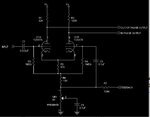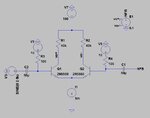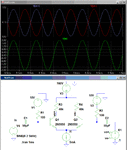pha0001m
Junior Member level 1
Hi all, I am currently working on a phase splitter for my valve audio amplifier. However, I wanted to design the phase splitter stage with transistors instead of traditional valves.
The original circuit, which was implemented with vacumm tubes is attached in figure 1. My LTspice attemped is attached in figure 2. The attempted failed, does anyone has any idea on how to implement a BJT phase splitter.
Thanks,


The original circuit, which was implemented with vacumm tubes is attached in figure 1. My LTspice attemped is attached in figure 2. The attempted failed, does anyone has any idea on how to implement a BJT phase splitter.
Thanks,


